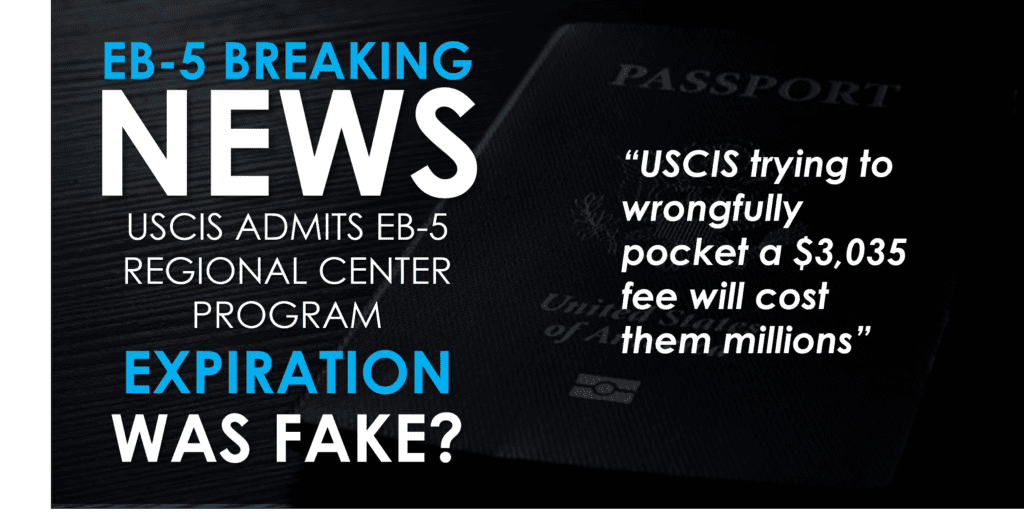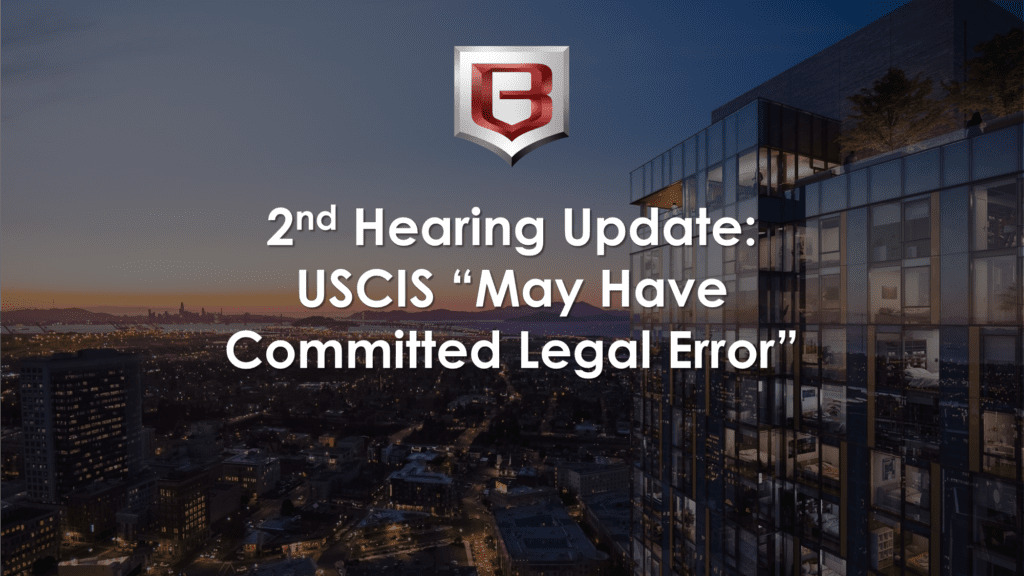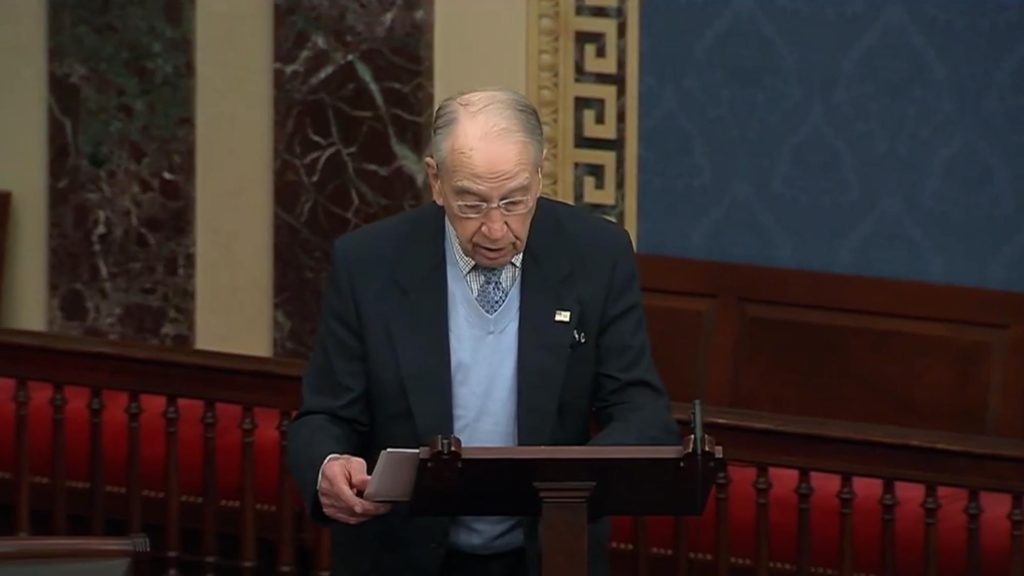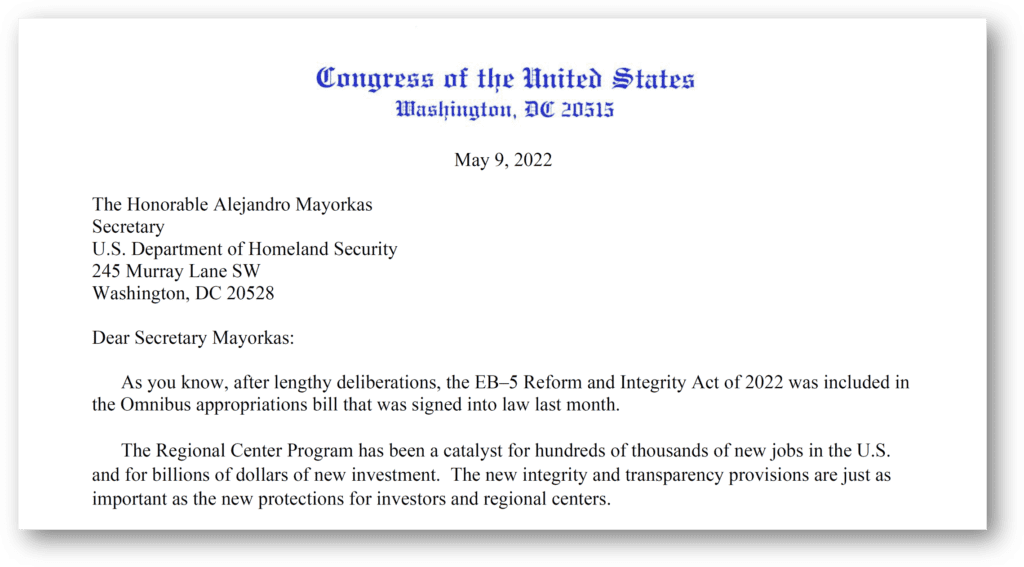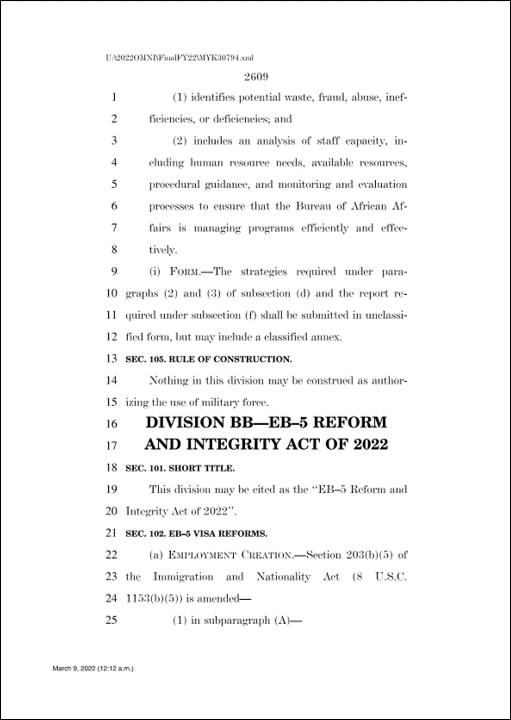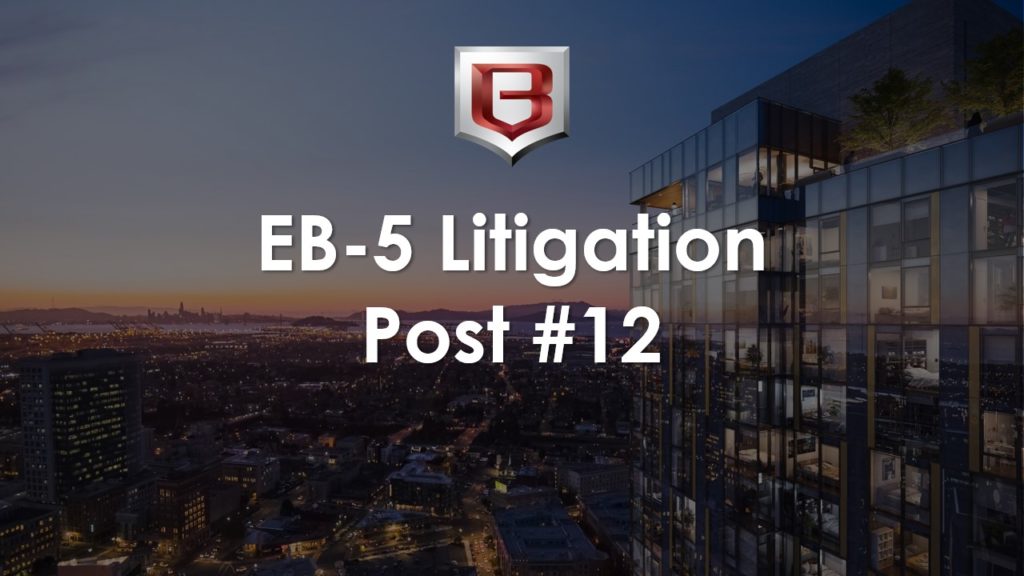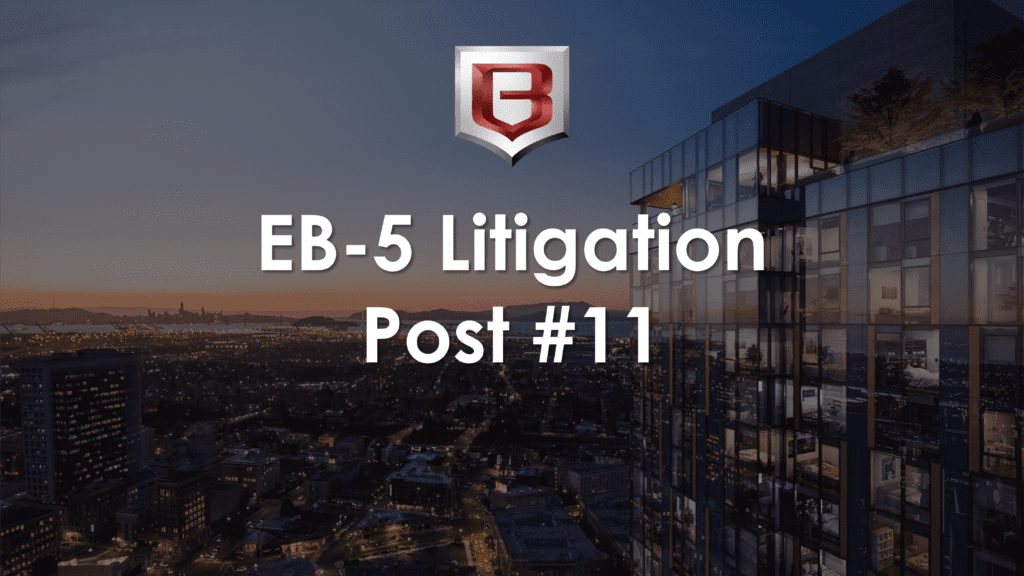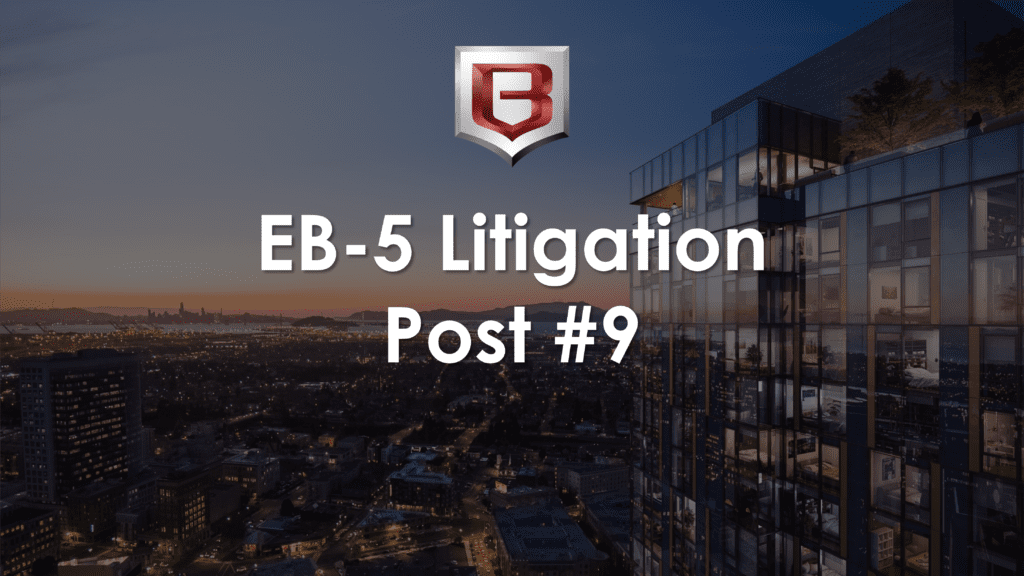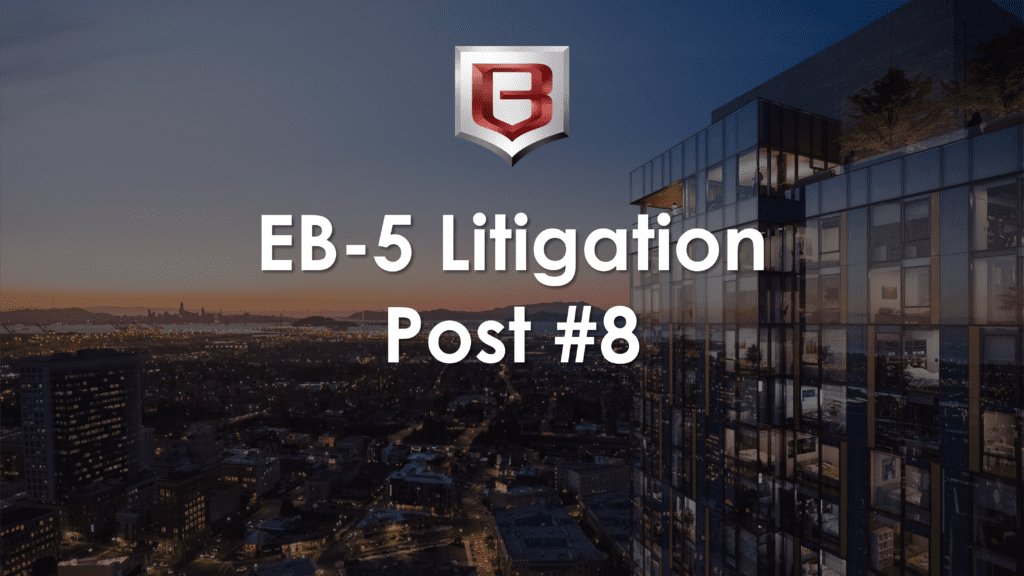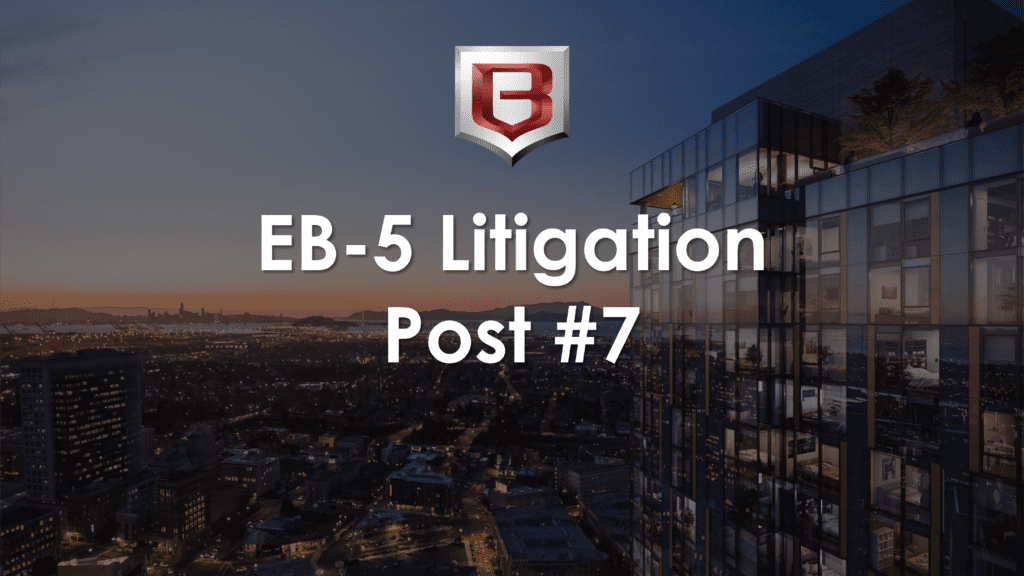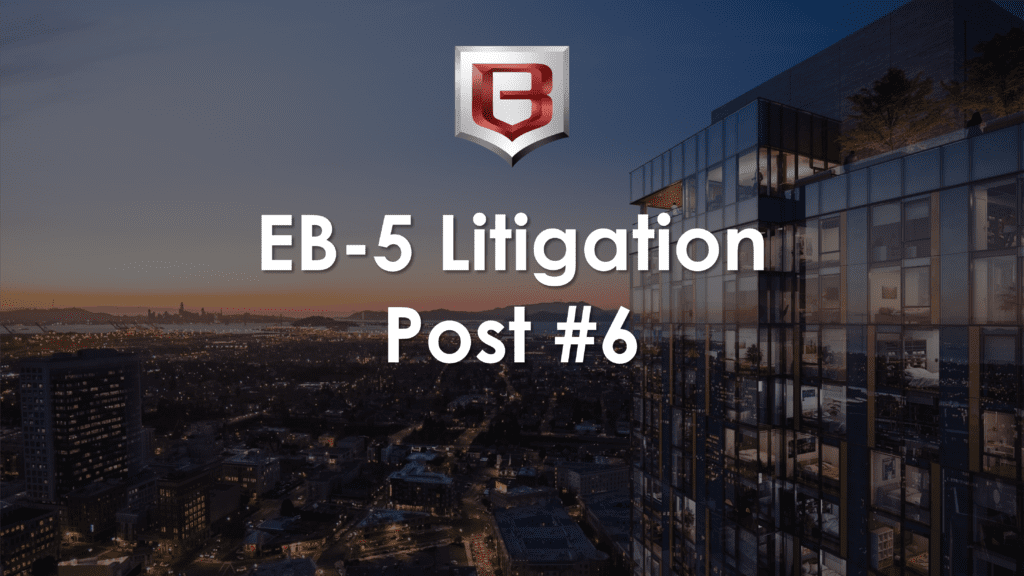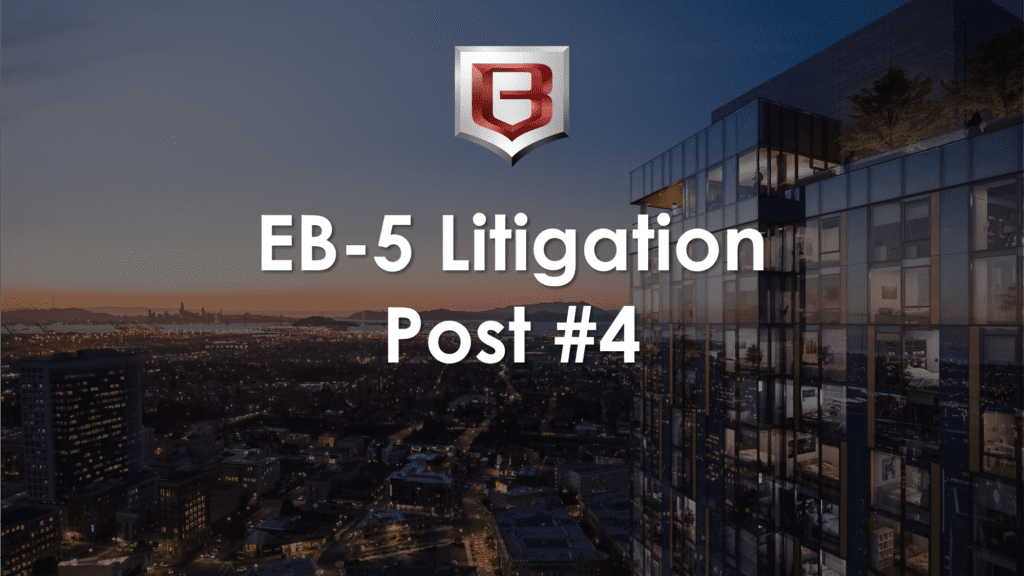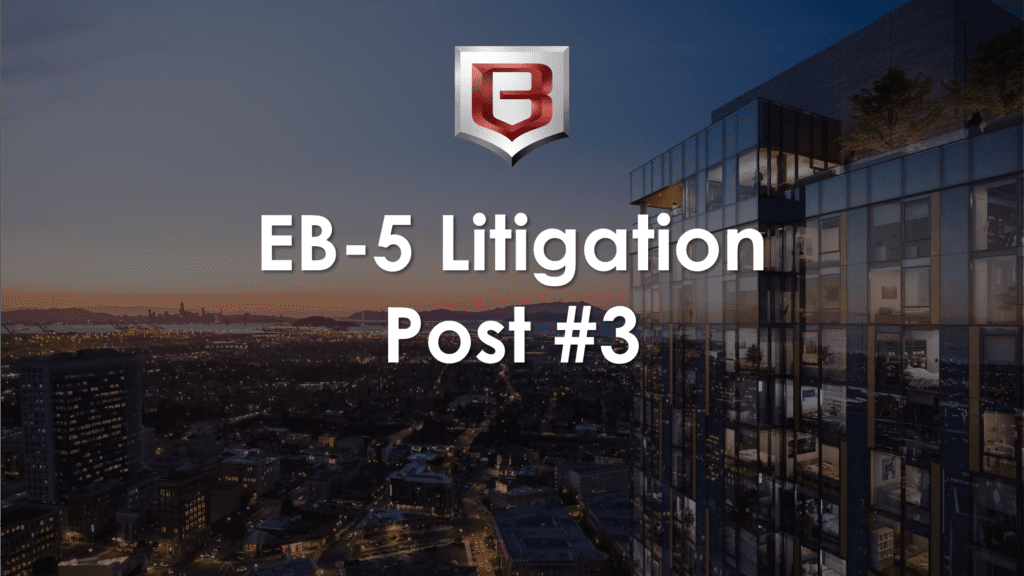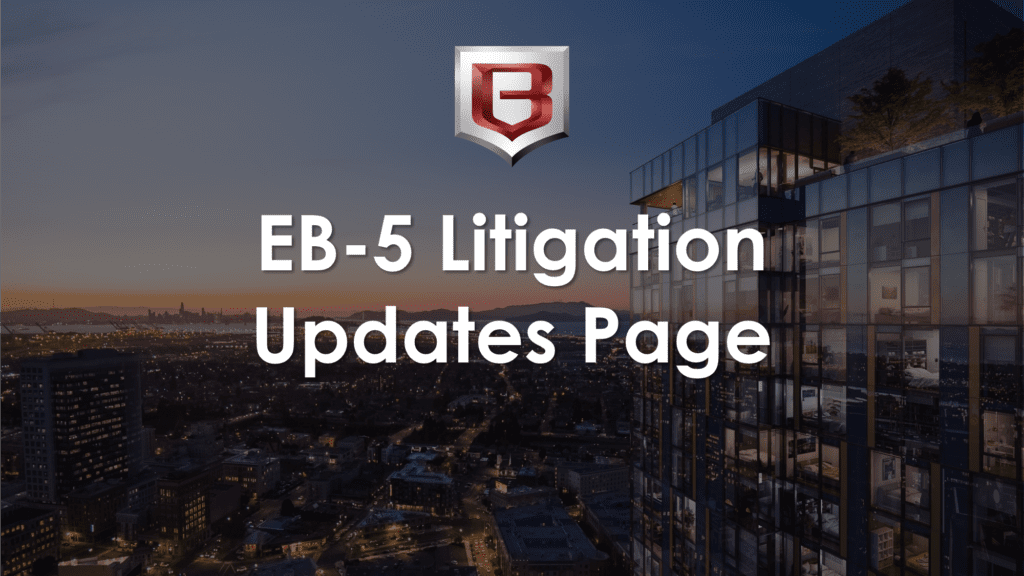Behring’s case against DHS is still pending. The government is expected to file a brief to reply to Behring’s arguments against the validity of DHS’s recent attempt to ratify the 2019 EB-5 Modernization Rule on April 22, 2021. The next court date is May 6, 2021. The court is expected to rule on Behring’s motion for summary judgment on the issue whether acting DHS officials were ineligible to serve due to their appointments in violation of the Federal Vacancies Reform Act. If the court rules in favor of Behring, then court is expected to declare the 2019 EB-5 Modernization Rule invalid. This would result in having the pre-November 2019 rules restored. In other words, TEA could be determined by state authorities under the original criteria. And the minimum investment amount would return to $500,000 for TEA-qualified projects.
At least for a limited time. The EB-5 Regional Center Program is due to be reauthorized on June 30, 2021. Already, an “integrity bill” has been presented to Congress to extend the program through 2026 while proposing several reforms to reduce risk of fraud and strengthen EB-5 protections. It is expected another bill would be presented, in light of the court’s decision, to raise the minimum investment amounts. Thus, new EB-5 investors would only have a limited period of time to invest at an 80% discount to current requirements.
In the meantime, we wanted to share with our readers a short glossary to help navigate the legal issues surrounding Behring’s lawsuit against DHS and USCIS.
EB-5 Immigrant Investor Program Modernization Rule:
The EB-5 Modernization Rule was implemented on November 21, 2019. The Rule, among other changes, increased the minimum investment amount by 80%, from $500,000 to $900,000. It also upended the TEA designation process, taking it away from the state authorities and granting only USCIS the authority to determine the decision. This meant that TEA confirmation would only occur through an I-924 project approval or an I-526 investor approval. This increased the risk and uncertainty for EB-5 investors and projects because they would have to wait 2-4 years before finally getting confirmation that the initial investment amount was, in fact, eligible for seeking the U.S. green card. In calendar year 2019, there were 6,650 in EB-5 investor petitions filed. After the 2019 Rule’s implementation, there were fewer than 150 new EB-5 petitions filed.
Preliminary Injunction:
A preliminary injunction is a temporary order by the court at the request of one party that prevents the other party from pursuing a course of action until the conclusion of a trial on the merits of the case. Here, Behring is seeking to enjoin DHS from continuing to implement the 2019 EB-5 Modernization Rule. To succeed, the requesting party must demonstrate substantial likelihood (1) of success on the merits of the claims at trial; and (2) of irreparable harm if the injunction is not granted.
Declaratory Judgment:
A declaratory judgment is the legal determination of a court that resolves the legal uncertainty of a matter between the parties to the case. Here, Behring is asking the court for a declaratory judgment that the 2019 EB-5 Modernization Rule is invalid and to enter an order vacating the Rule.
Summary Judgment:
Summary judgment is a judgment entered by a court for one party against the other party without the need for a full trial. It is appropriate when there is no dispute as to the material facts of the case. Summary judgments may be issued on the merits of the entire case or on discrete issues within the case. Here, on March 25, 2021, the court converted Behring’s motion for a preliminary injunction to that of summary judgment on the sole issue of whether the acting DHS officials involved in enacting the 2019 EB-5 Rule were appointed in violation of the Federal Vacancies Reform Act of 1998 (“FVRA”). This involves a legal question only; there are no facts in dispute between the parties. If there is a violation of the FVRA, then actions taken by those officials have no force or effect.
Federal Vacancies Reform Act of 1998:
The FVRA establishes the procedure for filling vacancies in an appointed office of an executive agency of the federal government before the appointment of a permanent replacement. Federal officials, such as the Secretary of Homeland Security and Direct of USCIS, must be appointed by the President and confirmed by a majority of the Senate. The FVRA limits who can serve in an acting role and how long they can serve. Violations of the FVRA are significant because private parties, like Behring Regional Center, can sue to void actions taken by officials serving in violation of the FVRA. On August 14, 2020, the Government Accountability Office (GAO) ruled that acting DHS Secretary Chad Wolf and acting Deputy Secretary Ken Cuccinelli, who was elevated to acting Director of USCIS, were serving based on an invalid order of succession in violation of USCIS. The GAO report is not binding legal precedent on a federal court but can be persuasive evidence.
Precedent:
In law, precedent is a judicial decision that is binding on equal or lower courts in the same jurisdiction as to that court decision’s conclusion on a point of law. It may also be persuasive to courts in other jurisdictions in subsequent cases involving sufficiently similar facts. This is the heart of the U.S. system of common law in which prior decisions (i.e. case law) from higher courts form the basis of evaluation in future cases by lower courts. Here, the August 2020 GAO ruling that acting DHS officials were ineligible to serve is not legal precedent, i.e. it doesn’t bind the federal district court, but it is persuasive and can help inform the court’s decision. Likewise, five other district courts[1] similarly ruled that acting DHS officials were appointed in violation of the FVRA and declared invalid the immigration rules and regulations at issue in those cases. Because these courts are on the same level as the U.S. District Court of Northern California, they are not binding on the court, but they, too, can be very persuasive for the court when deciding how to rule on Behring’s case.
Ratification:
On April 1, 2021, DHS notified the court that newly appointed DHS Secretary Alejandro Mayorkas ratified the 2019 EB-5 Modernization Rule, affirming the actions of the prior acting DHS officials, in an attempt to prevent the court from invaliding the 2019 Rule. Ratification is the adoption by an official as binding of an act previously done in the name of that office, even though the prior act may have been performed under such circumstances that would render it nonbinding. Here, Secretary Mayorkas claims that although he believes the 2019 EB-5 Modernization Rule to have been legally promulgated by former acting DHS Secretary McAleenan, for the avoidance of doubt, he is ratifying the act to attempt to confirm it. Behring argues that the FVRA expressly prohibits such ratifications by subsequent officials.
De Facto Officer Doctrine:
The de facto officer doctrine is a common law principle that says the acts of person acting under the color of official title and done within the apparent scope and authority of the office are valid and binding, even though it is later discovered that the legality of that person’s appointment is deficient. Its purpose is to promote stability of government and law and avoid a multitude of lawsuits seeking to void the officer’s past acts if there had been a defect in that officer’s appointment. Here, DHS argues that even if it were true the acting DHS officials were serving in violation of the FVRA, the 2019 Rule should remain in force because it has been the rule over more than a year before Behring challenged the rule’s validity and overturning the Rule would be disruptive to the EB-5 community.
On May 25, 2021, the court did not fully address this issue but intimated it disagreed that the EB-5 community has relied on the Rule or that invalidating it would be disruptive because very few new EB-5 investments have been made in comparison with the period before the Rule’s implementation. Behring further argues that the de facto officer doctrine is inapplicable because the issue is not mere irregularities of the acting officials’ appointments, but express violations of statute, viz. the FVRA.
For more EB-5 information, please visit Behring’s EB-5 Resources Center.
Behring is challenging DHS on the validity of the 2019 EB-5 Program Modernization Rule. If the EB-5 regulations are invalidated, then the $500,000 investment amount will be restored. But it is likely only for a limited time. The sunset date for the EB-5 Regional Center Program is June 30, 2021. New legislation is expected to change the required investment amounts. Learn how you can file your I-526 petition within 10 days.
[1] See, e.g., Immigrant Legal Res. Ctr. v. Wolf, No. 20-CV-05883-JSW, 2020 WL 5798269 (N.D. Cal. Sept. 29,
2020); Northwest Immigrant Rights Project, et al. v. USCIS, et al., 19-cv-03283-RDM (D.D.C. Oct.
10, 2020); Casa de Maryland v. Wolf, No. 8:20-cv-02118-PX, 2020 WL 5500165 (D. Md. Sept. 11,
2020); Vidal, et al. v. Wolf, et al., 16-cv-04756 (E.D.N.Y. November 14, 2020) and L.M.-M. v. Cuccinelli, 442 F. Supp. 3d 1, 29 (D.D.C. 2020).
CONTACT BEHRING TO LEARN MORE
"*" indicates required fields
Litigation Update Posts


